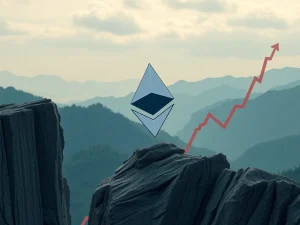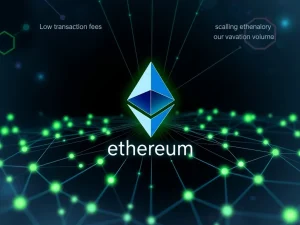Ethereum’s Ascendant Era: How RWAs and TradFi Cement its Institutional Dominance

The crypto market often buzzes with speculation, but a deeper, more profound shift is underway. While many attribute Ether’s recent surge to an altcoin season or ETF excitement, the true catalyst lies in **Ethereum institutional adoption**. Ethereum is quietly solidifying its position as the preferred platform for traditional finance. This transformation is driven by its commanding lead in two crucial sectors: stablecoins and tokenized Real-World Assets (RWAs). New US regulations are also paving the way for even broader integration. Consequently, this fundamental shift is reshaping ETH’s trajectory from a speculative asset to essential financial infrastructure.
The Unstoppable Rise of Stablecoins and Their Impact on Stablecoin Growth
Stablecoins have emerged as a critical component of the digital economy. Since early 2023, the stablecoin market capitalization has impressively doubled. It now stands at a robust $280 billion, according to DefiLlama. Analysts from McKinsey project this figure to exceed $400 billion by the end of this year. Furthermore, they anticipate a staggering $2 trillion by 2028. Initially, stablecoins served primarily as trading pairs for other cryptocurrencies. Now, however, they directly challenge traditional money transfer systems. They offer faster, cheaper, and more inclusive global transactions. Ethereum dominates this rapidly expanding sector. Dune Analytics data confirms that 56.1% of all stablecoins currently operate on the Ethereum blockchain. Therefore, as stablecoins increasingly take over cross-border payments, Ethereum stands to gain significantly from increased transaction fees.
Regulation is also providing vital legal backing for this growth. The **GENIUS Act**, signed in July 2025, establishes the first federal framework for stablecoins. This landmark legislation mandates one-to-one backing with dollars or short-term Treasurys. It also requires public reserve disclosures. Crucially, it keeps stablecoins outside of securities regulation. This makes their issuance and use safer and more predictable. Ultimately, it ties their expansion directly to US Treasurys and the dollar itself.
Real-World Assets (RWAs): Bridging TradFi and Blockchain
Tokenized **Real-World Assets (RWAs)** represent another explosive area of growth. This sector is experiencing rapid expansion as banks and asset managers recognize the efficiency of tokenized assets. Moving these assets is significantly faster than navigating complex traditional finance mechanisms. RWA.xyz reports a remarkable 413% growth since early 2023. The total value has surged from $5.2 billion to an impressive $26.7 billion today. Major financial players are actively driving this transformation. BlackRock’s BUIDL, WisdomTree’s WTGXX, and Franklin Templeton’s BENJI now coexist with crypto-native assets. These include Tether’s XAUT, Paxos’ PAXG, and Ondo’s OUSG and USDY. This convergence clearly illustrates the dissolving lines between crypto and traditional finance. Ethereum once again leads the market. It hosts over $7.6 billion in tokenized real-world assets. This accounts for a dominant 52% share of the entire RWA market. Consequently, Ethereum’s established infrastructure proves invaluable for this burgeoning sector.
Ethereum’s Institutional Edge: A Foundation for TradFi Blockchain Integration
Ethereum’s appeal to institutions extends beyond market share. Its credibility is a significant factor. As the oldest smart contract platform, Ethereum boasts a 100% uptime record. It also features broad decentralization. These qualities have earned it substantial institutional trust. Crypto News Insights has consistently highlighted that traditional finance increasingly views Ethereum as the most battle-tested and credibly neutral network. Ironically, these very attributes now make Ethereum far more attractive than the “private” blockchains once touted as the future for finance. The US regulatory landscape is further solidifying this position. The **CLARITY Act**, passed by the House on July 17 and awaiting Senate approval, introduces the concept of a “mature blockchain.” This act draws a clear line between assets regulated as commodities by the CFTC and those under the SEC’s securities oversight. This distinction holds sweeping implications for crypto finance and RWAs.
Any chain meeting the “maturity test” could potentially host tokenized versions of nearly any asset. To qualify, no single entity can control the network. Furthermore, no single entity can own more than 20% of its tokens. The code must be open-source, governance transparent, and participation broad. Ethereum easily meets these stringent criteria. This makes it the obvious choice for institutions preparing to bring the vastness of real-world assets on-chain. As regulation continues to build bridges between DeFi and TradFi, Ethereum is not merely well-positioned; it is rapidly becoming the infrastructure of choice for **TradFi blockchain integration**. Therefore, its role shifts from a speculative asset to a piece of core financial infrastructure. This fundamental change in perception significantly impacts its **ETH market analysis** and future price trajectory.
This article does not contain investment advice or recommendations. Every investment and trading move involves risk, and readers should conduct their own research when making a decision.










